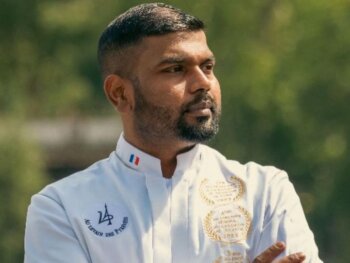We wind up our four-part series that honoured South Asian Heritage Month by taking a look at the modern art movement from India, Sri Lanka, Bangladesh and Pakistan. These pioneers of modern art have charted a trajectory for South Asian art that puts it high on the global scale of recognition. With nationally renowned art historian and curator Ali Adil Khan, we now take a look at the art history of Sri Lanka by looking at 3 pioneering modern artists who you should know.
*Click here to see our Art History Of India: 4 Pioneering Modern Artists You Should Know*
*Click here to see our Art History Of Pakistan: 4 Pioneering Modern Artists You Should Know*
*Click here to see our Art History Of Bangladesh: 4 Pioneering Modern Artists You Should Know*
South Asia forms an inverted triangle extending from the heights of the Himalayas to the depths of the Indian Ocean. Stretching 2,000 miles from north to south, and east to west, it is home to almost one-fourth of the World’s population and an ancient and diverse group of people, that speak different languages, practice varied religions and come from rich backgrounds and cultures. Therefor, it is no surprise that the modern and contemporary art originating from South Asia is a vibrant milieu of diversity, spirituality and tradition.
Sri Lanka is the tear drop to the south of India in the Indian Ocean and one of the smallest countries in South Asia, just surpassing Maldives and Bhutan. It has endured one of the longest conflicts in history, as the civil war that started in July of 1983 lasted for 26 years. Canada showed compassion to a large number of people affected by it, allowing them to immigrate to Canada, most of whom now live in the Greater Toronto Area (GTA).
Sri Lankan artists have produced seminal works of art since their independence in 1948, and most notable amongst them are; George Keyt, Amona Wijewardeene and Jagath Weerasinghe.
George Keyt (1903-1993)
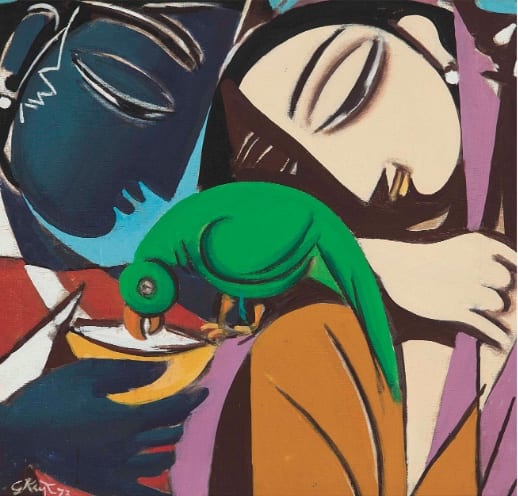
George Keyt (1901-1993) is Sri Lanka’s best-known artist and the founder of the ’43 Group of Artists’ (established in 1943) who attempted to merge trends in European modern art into their own cultural sphere, much like and ahead of the Progressives Group of Artists in India (established in 1947). The ’43 Group also included fellow Sri Lankan masters Ivan Peries and Harold Peiris.
Born at the turn on the century in Ceylon (present day Sri Lanka), Keyt studied at Trinity College in Kandy (Colombo), where he was drawn to the Buddhist and Hindu ethos surrounding him. Although he did not start painting until he was 26, he quickly established himself as a modernist that combined European painting innovations with the ancient South Asian fresco techniques found at Ajanta, Elora (India) and Sigiriya (Sri Lanka).
While his paintings exhibit a clear influence of cubism, his subject is rooted in local tradition depicting lovers, dancers and gods, often drawn from Hindu and Buddhist mythology. He leaves behind a large body of work that is bold and highly sensuous. Keyt in his lifetime has exhibited alongside great Western modernists like Picasso and Braque in galleries around the World.
Pablo Neruda the Chilean poet and the recipient of the Nobel Prize for Literature once said that “Keyt, I think is the living nucleus of a great painter. In all his works, there is the moderation of maturity, [and his] figures take on a strange expressive grandeur and radiate an aura of intensely profound feeling.”
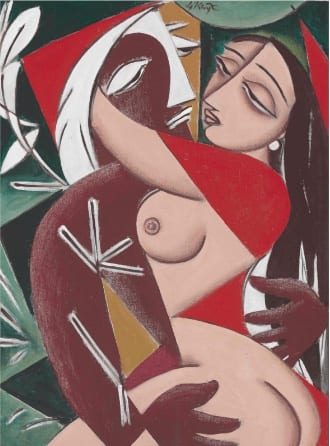
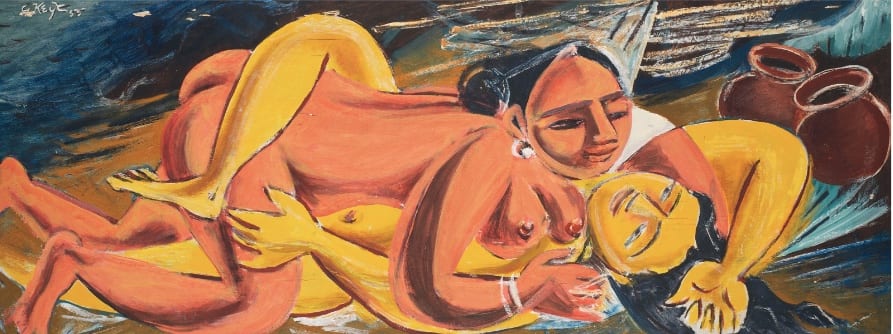
Anoma Wijewardene (1951-present)
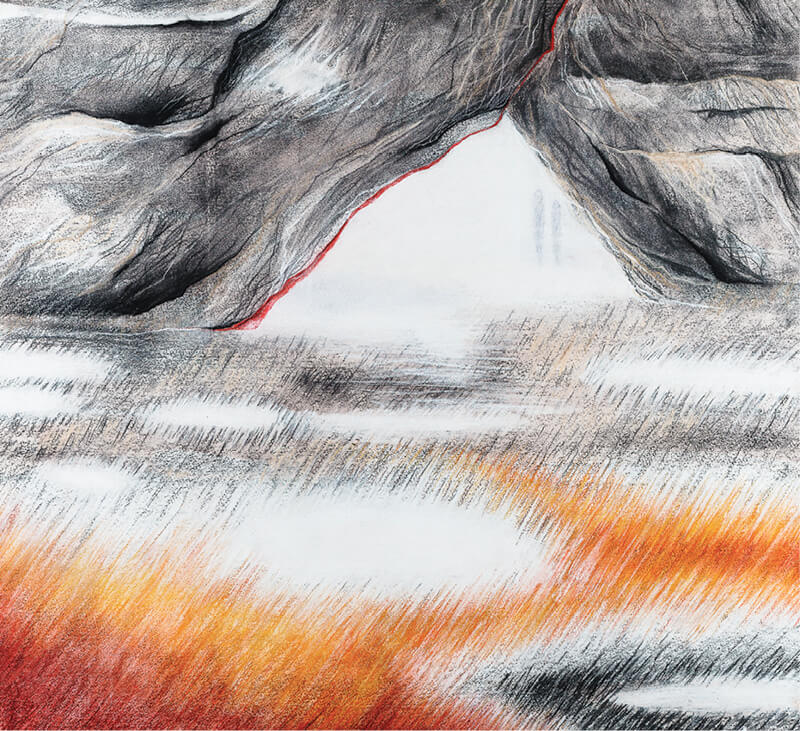
Anoma Wijewardene (b. 1951) is known for her painterly skills and capacity to be authentic and original while addressing her key concerns such as climate change and sustainability, that are so critical for the World and in particular for Sri Lanka’s survival. She studied at the St. Martin’s in London, U.K. and lived there for thirty years prior to returning home in 2003. During this period, she held several solo and group exhibitions around the world, including in New Delhi, Colombo, London, Kuala Lumpur, Sydney and Singapore. In 2019, Wijewardene has the singular honour to be the first from Sri Lanka to be invited to show her work in a solo exhibition at the 58th Venice Biennale.
She engages with varied groups and stakeholders that include scientists, activists and political pundits to create strong and multi-faceted works of art that has strong meaning and social context. This way, she actively contributes to an on-going dialogue on the need for harmony and healing in Sri Lanka. Paintings from Wijewardene’s 2019 series shown in London, U.K. are mixed media and named after quotations by an important global artist, philosopher, writer or poet. All of the paintings from this series contain a small figure in red, which Wijewardene says is Greta Thunberg, the young Swedish climate activist who challenged Trump.
Wijewardene began working on deconstructed and reconstructed paintings in response to the religious intolerance and its acceptance and normalization over time. A lack of reconciliation and closure between rival factions after the end of a long and difficult conflict also remained a cause of concern and deep anguish. She started examining closely the ancient Japanese restoration form “Kintsugi” (golden joinery) – where broken fragments of pottery are fused together with gold enamel, highlighting the breakage rather than disguising it. She referenced this technique in her work to show how we can find beauty in our differences and how diversity can make our experience richer.
Between 2014 and 2019, Wijewardene created art that spoke to intolerance, hatred and bigotry. Describing her work, she said that ‘my work reflects on the universality of man and our common humanity in the face of conflict, misguided religious fervour and human insecurity and invites us to accept the teachings of all religions which emphasises tolerance and the acceptance of the stewardship we share of our fragile and fractured planet along with care for our fellow human being’. She lives and works in her studio in Columbo.
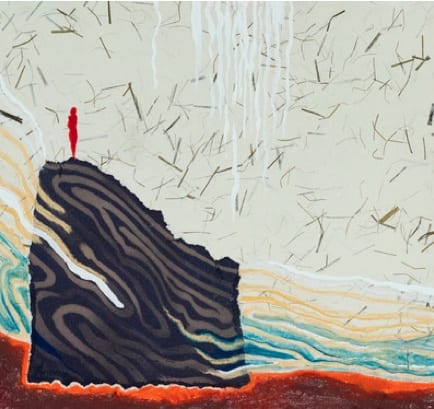
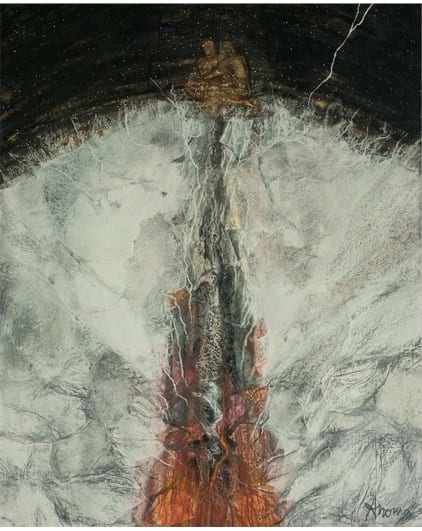
Jagath Weerasinghe (1954-present)
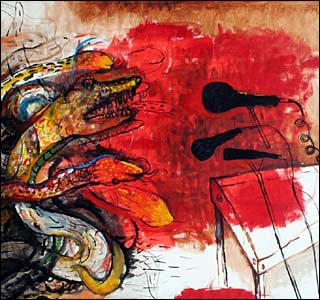
Jagath Weerasinghe (b. 1954) is one of the most important artists of Sri Lanka. Weerasinghe wears several hats. He is the Head of the Postgraduate Institute of Archaeology in Sri Lanka and his work reflects a strong mix of his role as a teacher, an artist, an activist and an archaeologist.
Weerasinghe is a pivotal figure in the development of contemporary art and a significant driving force behind it since the early 1990s. His art is highly political and critical of the actions of the state and the society. During his student days in the ’70s, Weerasinghe was abducted by government agencies and tortured due to his leaning towards the communist ideology.
Later on in the ’90s, Weerasinghe’s continued resentment with the state sponsored violence against the minority Tamils by majority Sinhalese Buddhists with non-violent principles, manifested in a strong confrontational tone in his art, with use of images and symbols to convey his stance against violence. This led to a systematic isolation by his friends who belonged to the Sinhalese community.
His painting titled “Shiva II” (2007) employs the dance of destruction and creation by the Shiva Nataraja as a metaphor for the Sri Lankan’s successive governments support to crush the uprising and the civil war between the Sinhalese and the Tamils. He efficaciously depicts this process of cosmic destruction and creation with energetic strokes, bold colours and undertaking, to show how religious discourse has within it, ingrained forms of violence to achieve lasting peace and stability. His work titled “Snakes and Mics” (2005) is critical of the regime’s words and actions.
His drawings, watercolours and installations attempt at unfolding stories of inhumanity and barbarity that repressive regimes are capable of unleashing on their own citizens. He questions his own identity as belonging to the majority Sinhalese community and rejects their practices, in particular those not in alignment with Buddhism as a religion of peace.
Weerasinghe co-founded the Theertha International Artists Collective in 2000 with a few like minded people to expose local contemporary artists to international art movements, residencies and workshops. It now forms a strong link and network within South Asia with other artists collectives such as; Vasl (Pakistan), Khoj (India), Sutra (Nepal) and Brito Arts (Bangladesh). Weerasinghe lives and works in Colombo.
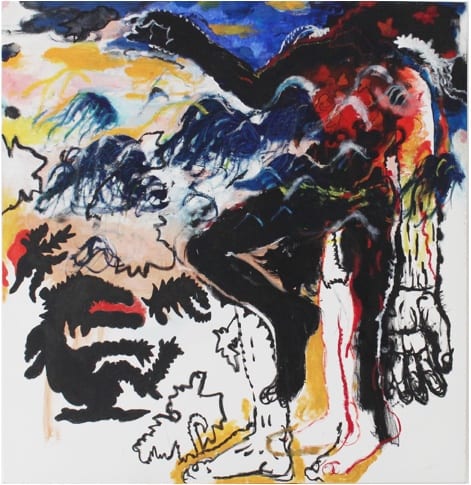
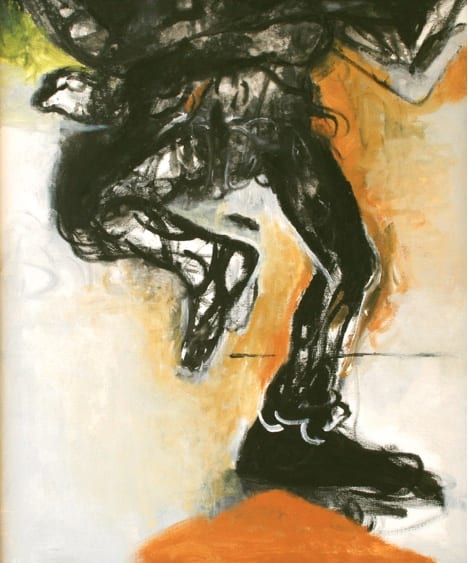
Main Image Photo Credit: www.bbc.com
Ali Adil Khan
Author
Ali Adil Khan (@ali.a.khan) is the founder of the South Asian Gallery of Art & director of the SAGA Foundation in Toronto. He's an art critic, curator, writer & collector. He has curated exhibitions in Canada & served as an advisor to various museums including the ROM & Aga Khan Muse...











































































































